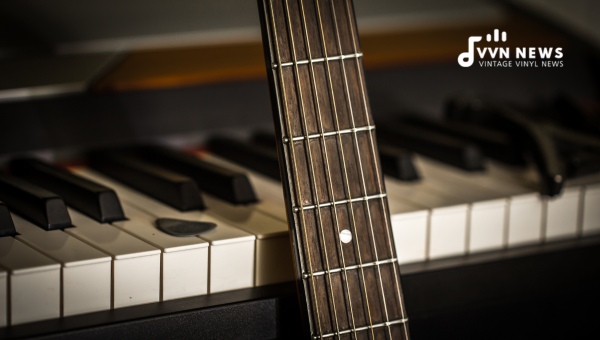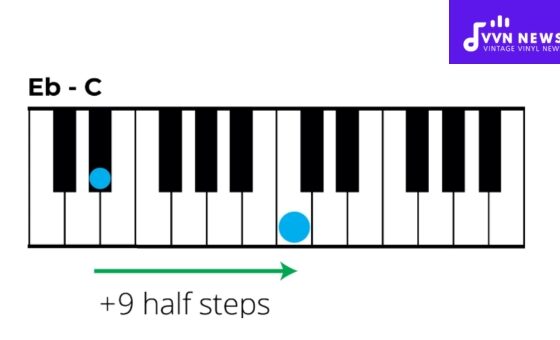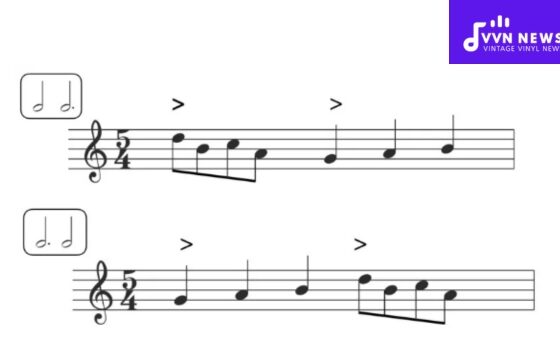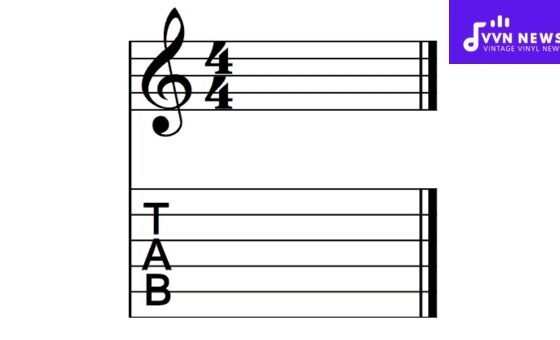Emotions are an undeniable factor that profoundly impacts our experience with music.
The melody’s ebb and flow, the rhythm’s pulse, and the harmony’s depth all play their distinctive roles in drawing out our feelings.
An essential yet often overlooked component in the emotional richness of a song is its musical key.
In this blog post, we will explore the fascinating world of Musical Key Characteristics and emotions, diving deep into how different keys can evoke a diverse array of emotions.
Music offers an unimaginably vast landscape for exploration, set forth by gifted composers over centuries.
One might find it intriguing how changing a song’s key could significantly alter its emotional impact, transforming its mood entirely.
Understanding this phenomenon takes us on an exciting journey into music theory and cognitive psychology, making it clear why certain keys strike chords differently within us than others.
Musical Keys
In the realm of music, musical keys act as a guiding map that outlines notes, chord structures, and scales on which a piece of music is founded.
Picture it this way: If music were a building, then its key would serve as its foundation.
What are Musical Keys?
Essentially, musical keys are centered on groups of related pitches or tones derived from a scale, which can be major (happy sounding) or minor (sad sounding).
To put it simply, the key could be understood as the ‘home base’ of a tune. It is the note to which everything ultimately relates.
Often, our ears find fulfillment when the song resolves itself back to this base note. For example, if you’re playing a song in the key of C Major, you will likely start and end with a C note or chord.
The Circle of Fifths is one standard tool that demonstrates how different keys relate to each other.
This circle displays all 12 notes used in Western music along with their relative major and minor keys.
Also Read: A Major Scale [The Key To Bright, Cheerful Musical Pieces]
The Impact of Musical Keys on Emotions
Music has served as an emotional outlet since time immemorial and musical keys play an essential role in dictating specific feelings within listeners.
Have you ever noticed how certain songs make you feel cheerful while others could move you to tears?
This emotional resonance stems from not just lyrics but also melody and harmony together enhancing subjective interpretations of whether music sounds happy or sad.
Every musical key carries unique emotional implications given its tonal characteristics – making moods range from joyful and heroic to somber and melancholic solely based on the change in key.
It’s fascinating how altering even one note can dramatically sway our perception using the same melodic structure.
Consequently understanding musical keys simply means understanding emotions; each musical key represents a unique emotional color that composers use to paint their sonic landscapes.
The multifaceted impact of musical keys on emotions makes music an almost universal language capable of transcending cultural and linguistic barriers, delivering poignant experiences across humanity.
Major vs. Minor: The Battle of Emotions

One of the overarching dichotomies in the vast constellation of music keys is the clash between major and minor keys.
This dualistic framework symbolizes a grandeur battle in the musical arena where tonalities grapple with intense emotions, each end of this spectrum evoking distinct feelings and moods within us.
Also Read: B Major: The Scale And Chords [Guide To This Bold & Beautiful Key]
Major Keys: Expressing Joy, Optimism & Positivity
Commonly, major keys are associated with emotions like joy, triumph, and optimism.
They tend to sound bright, lively, and positive due to their structural composition.
The “happy” quality of major keys resides in their intervallic structure – the specific arrangement of half-steps and whole-steps that create an upbeat sound.
Let’s take, for example, a song in C Major. This key contains no sharps or flats, resulting in a sound that is pure and straightforward.
Being the backbone for countless pop songs known for their catchy melodies, this key often evokes an overall feeling of joy and enthusiasm.
Pieces like Beethoven’s Symphony No. 9 (“Ode to Joy”) written in D Major, encapsulate a triumphant mood celebrating humanity’s potential for goodness.
Compositions written in major keys have a universal appeal as they reflect shared experiences of elation, making us tap our feet or sway gently to rhythm’s delight.
Minor Keys: Harnessing Sadness, Drama & Intensity
On the other hand lies the world shrouded beneath minor keys, often invoking feelings tied to melancholy tales – sadness, introspection or even drama.
This array’s poignant spectrum lends music its capacity to touch deeper terrains within us.
We find ourselves drawn towards minor-key songs due to their uncanny ability to evoke intimate emotions cloaked in mystery and intensity.
The depth emerges from the minor keys’ unique patterns, which follow a different order of whole-steps and half-steps compared to their major counterparts. Consequently, they carry a less resolved or “sad” quality.
Take A minor, for example; one of the simplest keys bears a haunting beauty. Songs in this key often create signatures of introspection and melancholy, resonating with our darker emotions.
Famous compositions like Beethoven’s Symphony No. 5, known for its moving intensity, is written in C Minor—perfectly showing the minor keys’ power to channel dramatic emotions with finesse.
The major-minor dichotomy plays an enormous part in steering our emotional responses to music, painting its canvas with broad strokes of human emotion from joyous heights to contemplative quietude.
In understanding this fascinating binary between major and minor keys therein lies the key (pun intended) to unlocking the potential within us – not just as listeners but also creators – celestially crafting symphonies of our intricate human nature.
Also Read: A Minor Pentatonic Scale [Create Powerful Solos With This Key]
Musical Key Characteristics
In the grand landscape of music, the use of different keys can evoke an array of unique emotions in listeners.
Let’s walk through these keys, from C to B minor, detailing how each derives distinct emotional responses.
C MAJOR – Innocently Happy
As one of the most common and recognizable musical keys, tunes within C Major personify innocent happiness.
It’s often associated with a light-hearted, upbeat mood. A pure C Major key stands unaltered and uncluttered on a keyboard or piano, making it a go-to for many composers looking to uplift their audience’s spirits.
C MINOR – Innocently Sad, Love-Sick
The mirror image of its major counterpart, C Minor, embodies innocence but is tinted with sorrow or longing.
This key is frequently used within emotional ballads as it evokes love-rich yet tragic feelings. When notably used in Beethoven’s Symphony No.5, this key beautifully expresses a sentimental pathos that is soul stirring.
C# MINOR – Despair, Wailing, Weeping
Moving up the scale slightly takes us to C# Minor, which shifts emotions towards deeper despair.
Frequently found in darker compositions, the profundity of this key is as synonymous with expressive wailing or weeping as evidenced by Beethoven’s Moonlight Sonata; hauntingly beautiful and wrapped in silent introspection.
Also Read: A Minor Pentatonic Scale [Create Powerful Solos With This Key]
DB MAJOR – Grief, Depressive
On the flipside Db Major, often described as mournful or depressive. Every note in this key can seem to droop under an invisible weight—an excellent representation of grief itself—when music tries to convey dejection and disparity.
D MAJOR – Triumphant, Victorious War-Cries
Craving a burst of triumph? Look no further than D Major. Renowned for its robust, bright sound, D Major is synonymous with victory and elation.
This key succeeds in conveying the thrill of accomplishment and is often used in anthems or battle hymn-inspired tracks like Handel’s Hallelujah Chorus.
D MINOR – Serious, Pious, Ruminating
Conversely, D Minor serves up a dose of seriousness. This key resonates solemnity and piety well; thus being revered amongst composers as a “true” minor key that innately captures deeply contemplative moods.
D# MINOR – Deep Distress, Existential Angst
In comparison, D# Minor amplifies even deeper distress and brings to life existential angst.
Music researchers often relate this key with feelings of dread or tension that creates an atmosphere tingling with anxiety.
EB MAJOR – Cruel, Hard, Yet Full of Devotion
Switching back to major keys again with Eb Major, this key embodies a peculiar blend between hardness and devoted love.
While it suggests cruelty or austerity on one hand, it equally indicates deep commitment and devotion at its core.
E MAJOR – Quarrelsome, Boisterous, Incomplete Pleasure
E Major has often been touted as a dynamic key. It equally blends notes that form an undertone of quarrelsome vibes yet harnesses an energetic magnetism.
Often deemed unexpected or incomplete pleasure, the sound in E Major can evoke emotions galore in listeners with its boisterous flourish.
Also Read: B Flat Major Scale [Exploring This Warm & Mellow Key]
E MINOR – Effeminate, Amorous, Restless
Juxtaposing this energy is E Minor, evoking restlessness and amorous feelings with subtle feminine nuances.
Its echoes can elicit tender memories or yearning sentiments that beautifully translate to emotive stories spun by talented composers.
F MAJOR – Furious, Quick-Tempered, Passing Regret
F Major is typically associated with hastened fury and quick temper. Echoing strong headstrong emotions, pieces tied to this key also slip a tinge of passing regret into their compositions elucidating the fleeting nature of tantrums.
F MINOR – Obscure, Plaintive, Funereal
Moving towards F Minor, the soundscape takes a somber turn; it’s associated with obscurity and plaintiveness akin to funeral melodies—deeply melancholy while concurrently being hauntingly beautiful.
F# MAJOR – Conquering Difficulties, Sighs of Relief
After traversing through somber tunes comes F# Major, representing a conquering spirit full of staunch resilience often followed by sighs of relief.
This key protrudes as the embodiment of overcoming obstacles and working through challenges.
F# MINOR – Gloomy, Passionate Resentment
On the contrary spectrum lies F# Minor, typically embodying gloominess while flavored with passionate resentment—reflecting those moments when love turns bitter and despair takes hold.
G MAJOR – Serious, Magnificent, Fantasy
Next up we have G Major, a paradox in itself—serious yet fantastical. It loses itself within magnificent notes that announce gallant arrivals or majestic sights, serving as the key where imaginations run wild.
G MINOR – Discontent, Uneasiness
On the flipside exists G Minor, sounding out discontent and rendering uneasiness while casting an ambiance teetering towards a murky tumult of emotions.
AB MAJOR – Death, Eternity, Judgement
Ab Major is associated with heavier themes of death, eternity, and judgment. Composers have long used this key to express somber occasions and reflective moments.
Also Read: A Flat Major Chords [Master This Key With Ease]
AB MINOR – Grumbling, Moaning, Wailing
In contrast to its major relative is Ab Minor, which is often utilized to express dissatisfaction as it personifies grumbling, frustration, and sorrowful moaning.
A MAJOR – Joyful, Pastoral, Declaration of Love
Shedding light back into the sonic landscape comes A Major, characterized by joyfulness and pastoral calmness with its chords often seen declaring love.
A MINOR – Tender, Plaintive, Pious
Contrastingly A Minor gently cradles tenderness while also echoing plaintive inklings with subtle pious undertones penned in compositions designed to soften hearts.
BB MAJOR – Joyful, Quaint, Cheerful
Fasten your seatbelts for the joyful ride brought forth by Bb Major. Oozing cheerful charm while encapsulating quaint melodies, this key transfers infectious joy onto listeners, leaving no room for despair…
BB MINOR – Terrible, Night-like, Mocking
Diametrically opposing is Bb Minor, complementing terrible moods. Its night-like tone envelops listeners in a cloak of ominous tension while harnessing a mocking twinge that unlocks hidden pathos.
B MAJOR – Harsh, Strong, Wild, Rage
We have B Major, notably represented by its harsh and strong temper. It garners wild depictions while lending a sense of inflamed rage, often resonating with powerful emotionality in compositions and ensnaring listeners in its throw.
B MINOR – Solitary, Melancholic, Patience
To round off the musical keys is B Minor, an embodiment of solitude and melancholia. This key speaks directly to the souls of listeners, stringing verses of patience, encompassing a wide range of human emotions, thus marking it an apt end-point for our journey.
Suppose music indeed is the universal language our world speaks. In that case, musical keys embody its vast vocabulary – accurately mirroring all facets of human emotions ready to be sympathetically unraveled by keen listeners.
Emotions

In the intricate world of music, emotions play a pivotal role. These feelings induced by harmonious sounds enable us to connect with the music on a deeply personal level.
As a result, understanding emotions in terms of musical keys equates to unraveling the language of our hearts.
Also Read: Best Keyboard Players In The World [Top Performers Of All Times]
What are Emotions?
Emotions are complex psychological states that involve three distinct components: a subjective experience, a physiological response, and a behavioral or expressive response.
As human beings, we associate emotions with a wide variety of experiences that shape our interpretation of the world around us.
From joy to grief, happiness to despair – emotions encompass a broad spectrum of feelings that color our existence in myriad ways.
They play critical roles not just in our social engagements but also significantly influence our decision-making processes and coping mechanisms.
The Expression of Emotions Through Music
Music is often described as the language of emotion. This is because it can depict and invoke an extensive range of emotions – joy, sadness, excitement, fear, surprise – the list goes on.
It’s no mystery that we often turn to music for solace during hard times or revelry during moments of celebration.
Every component in music – pitch, tempo, rhythm, melody – plays its distinct role in expressing and evoking emotions; but particularly noteworthy is the impact generated by musical keys.
Each key possesses distinct emotional characteristics which composers use skillfully to create desired responses from listeners.
Emotions in Context: Major vs. Minor Keys
Understanding musical keys and their emotional implications generally requires distinguishing between major keys (which typically sound happy or bright) and minor keys (expressing sad or solemn moods).
Of course, attributing specific emotional dimensions such as ‘happy’ or ‘sad’ can oversimplify this dynamic interplay as there are countless shades of these emotions depending on various factors like composition style or personal interpretation.
Consider how deceptively simple lullabies can evoke such profound depth of serenity or ponder why triumphant fanfares stir such intensity within us – at heart lies the clever use of musical keys lending these tunes their respective emotional flavors.
Emotional Characteristics for Some Common Musical Keys:
| Musical Key | Emotional `Characteristic |
|---|---|
| C Major | Innocently Happy |
| D Minor | Serious, Pious, Ruminating |
| E Major | Quarrelsome, Boisterous |
| F# Minor | Gloomy, Passionate Resentment |
| G Major | Serious, Magnificent |
Understanding Emotions: A Path of Self-Discovery
Understanding emotions via musical keys is more than an intellectual exercise. It can be a journey of self-discovery and personal growth.
This exploration can not only heighten our appreciation for music’s beauty and complexity but also deepen our insights into our own emotional world and how we interact with others.
At heart, music signals to us what it means to feel – to love, to grieve, to dream – nurturing our emotional intelligence in the process.
FAQs About Musical Key Characteristics & Emotions
What is a musical key?
A musical key outlines the tonal foundation or ‘home base’ of a piece of music, based on which its notes, chord structures, and scales are formed.
How does the choice of key affect a piece of music?
The musical key significantly determines the overall mood and emotional impact of a song, making it sound happy (major), sad (minor), or somewhere in between.
What is the Circle of Fifths?
The Circle of Fifths is a visual tool displaying how different keys relate to each other, consisting of all 12 notes used in western music along with their associated major and minor keys.
Do major keys always sound happy and minor keys always sound sad?
Major keys generally sound brighter or happier while minor keys are more likely to convey somber or melancholic tones. However, this isn’t absolute as context and individual perception also play crucial roles.
Can changing the key change my song’s mood completely?
Yes, altering the key can significantly shift your song’s mood. For example, moving from C major to C minor might give your song an entirely different emotional color.
Conclusion
The concept of Musical Key Characteristics & Emotions provides a fascinating insight into how music impacts our emotions.
Each musical key contains its vibrant emotional color, shaping the mood and effect of a piece.
Having an understanding of this offers musicians a powerful tool for emotional expression.
Whether you’re a composer, performer, or avid listener, knowing about these key characteristics undoubtedly enriches your musical experience. As I always say, music isn’t just heard; it’s felt.
So, here’s to more soul-stirring symphonies and heartwarming melodies – enhanced by our comprehension of musical keys and their emotion-packed expressions.








